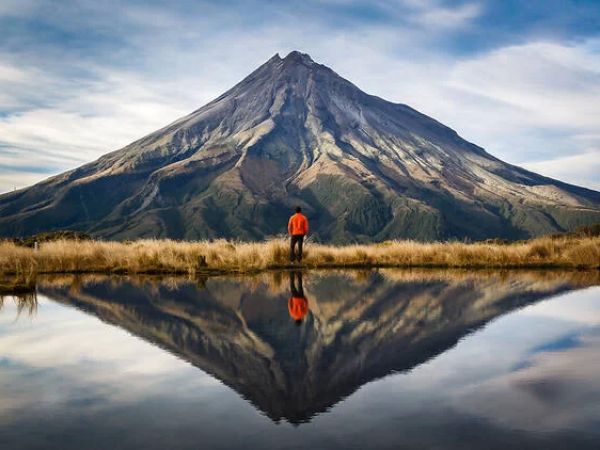Best Eco-Tourism Sites in Costa Rica: A Paradise for Nature Lovers
- 1. Why Choose Costa Rica for Eco-Tourism?
- 2. Costa Rica’s Eco-Tourism Initiatives
- 3. Manuel Antonio National Park
- 4. Corcovado National Park
- 5. Tortuguero National Park
- 6. Monteverde Cloud Forest Reserve
1. Why Choose Costa Rica for Eco-Tourism?
Costa Rica has become a leading destination for eco-tourism thanks to its diverse landscapes, rich biodiversity, and commitment to sustainable travel. The country is home to rainforests, beaches, volcanoes, and an array of wildlife, making it an ideal spot for eco-tourists who want to experience nature up close. Costa Rica has made significant strides in protecting its environment, with over 25% of its land protected as national parks or reserves. By choosing Costa Rica for your next eco-tourism trip, you will not only have an unforgettable travel experience but also contribute to the preservation of this beautiful country’s unique ecosystems.
2. Costa Rica’s Eco-Tourism Initiatives
The Costa Rican government has long been a proponent of sustainability, with policies that support environmental protection and promote responsible tourism. The country’s commitment to reducing its carbon footprint and protecting its natural resources has led to eco-tourism becoming a cornerstone of its economy. Through initiatives such as the Certification for Sustainable Tourism (CST) program, Costa Rica ensures that hotels, tour operators, and other businesses meet strict sustainability standards. By supporting CST-certified companies, eco-tourists can be confident that their travel choices are making a positive impact on the local environment and communities.
3. Manuel Antonio National Park
One of Costa Rica’s most popular eco-tourism destinations is Manuel Antonio National Park, known for its pristine beaches, lush rainforests, and rich biodiversity. Located on the Pacific coast, the park offers a range of eco-friendly activities such as guided nature walks, birdwatching, and wildlife viewing. Visitors can spot monkeys, sloths, iguanas, and a variety of bird species, making it a must-visit spot for nature lovers. Manuel Antonio’s beaches are perfect for swimming, snorkeling, or simply relaxing while enjoying stunning views of the ocean and surrounding jungle.
4. Corcovado National Park
For eco-tourists looking for an adventure in one of the most biologically intense places on Earth, Corcovado National Park is a must-see. Located on the Osa Peninsula, Corcovado is a haven for wildlife, including jaguars, tapirs, scarlet macaws, and more. The park offers opportunities for hiking, camping, and wildlife photography while immersing visitors in a truly remote and pristine environment. Corcovado’s trails take you through tropical rainforests, rivers, and mangroves, providing a unique and unforgettable experience for those who want to explore Costa Rica’s natural beauty.
5. Tortuguero National Park
Tortuguero National Park is another fantastic eco-tourism destination in Costa Rica, famous for its canals, dense jungles, and sea turtle nesting sites. Located on the Caribbean coast, Tortuguero is accessible by boat or plane, adding to its allure as a remote paradise. The park is home to a variety of wildlife, including monkeys, sloths, and hundreds of bird species. The highlight of visiting Tortuguero is the chance to witness sea turtles nesting along the beaches, which happens between July and October. Guided boat tours through the park’s canals offer an up-close look at the wildlife and unique ecosystems that make this area so special.
6. Monteverde Cloud Forest Reserve
For those seeking a unique highland eco-tourism experience, the Monteverde Cloud Forest Reserve is a must-visit destination. Located in the mountains of Costa Rica, this cloud forest is one of the most famous biological reserves in the world. The reserve offers a mix of cloud forests, waterfalls, and trails that take visitors through the mist-covered canopy of the forest. Eco-tourists can enjoy activities such as birdwatching (with the chance to see the endangered quetzal), hiking, and zip-lining. The Monteverde Cloud Forest Reserve is a prime example of how Costa Rica’s eco-tourism initiatives are preserving the country’s diverse ecosystems while offering visitors the chance to experience nature in a sustainable way.
In conclusion, Costa Rica is an exceptional destination for eco-tourism, with its diverse range of protected parks, reserves, and sustainable tourism initiatives. Whether you’re exploring the wildlife-rich Corcovado National Park or relaxing on the pristine beaches of Manuel Antonio, Costa Rica offers unforgettable experiences for nature lovers. For more information on eco-tourism in Costa Rica and to plan your next adventure, visit How to Travel the World.






